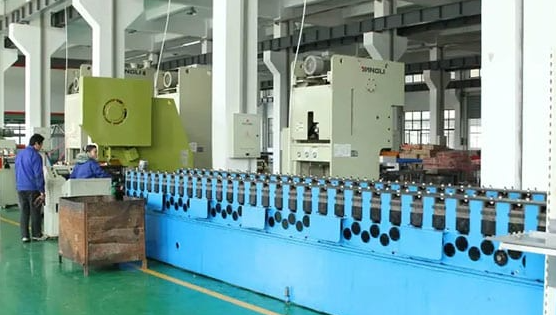Factory audit means that the orderer puts forward factory inspection requirements in order to audit the output and capacity of the cooperative factory, and evaluates whether the factory meets the capacity and quality requirements required by the trader according to the production status, environmental sanitation, compliance with national laws and regulations and other items. What does the factory audit include? What are the specifications for a factory audit? Specifically, there are the following points:

What Are The Contents Of Factory Audits?
Salary and welfare status
Regulations on the arrangement of working hours, holidays, medical expenses, industrial injury, social insurance and other employee benefits, personal rights, the setting of manufacturer’s security measures, etc.
Safe production
1: There shall be training and education mechanisms and training materials for safety production, and there shall be training records.
2: All high-risk processes shall have isolated independent operation areas. All machinery and equipment are equipped with a safety cut-off mechanism. Protective covers shall be installed where there is gear or belt transmission. Employees are not allowed to wear loose clothes. Women workers with long hair should tie their hair.
3: High temperature and high-pressure places and all machinery and equipment are equipped with shields and safety tips.
4: There shall be an independent special warehouse for hazardous chemicals, and there shall be a system to limit the maximum storage capacity.
5: Hazardous chemicals that are easy to leak shall have secondary anti-leakage facilities.
6: Employees exposed to hazardous chemicals shall be provided with goggles, activated carbon masks, and rubber gloves free of charge. Other high-risk types of work shall also be provided with head, ears and hands-free of charge according to their needs
7: Machine maintenance and repair procedures, including machine maintenance, repair cards or records.
8: Training records of relevant machine maintenance personnel (machine maintenance or affected employees).
9: Assessment report and rectification record of work environment hazards.
Fire safety
1. The setting of emergency exit and safety passage shall be smooth
2. Improvement of emergency lighting, fire alarm bell, fire hydrant, fire extinguisher, and other safety equipment
3. Publicity and exercise of disaster prevention and reduction knowledge.
Site management
1: Production site management (according to 5S requirements)
2: The floor shall be complete and smooth, and the operation area shall be delimited.
3: Safe drinking water and controlled first aid medicine kits are available.
4: The list of trained first aiders and the use and filling records of drugs in the first aid kit.
5: The number of toilets (men and women, including factories and dormitories) is reasonable.
6: The items on site are placed in order.
7: All machinery and equipment shall be reasonably and neatly distributed, and cleaned every day without dust and oil stain.
8: Daily maintenance and inspection records of machinery and equipment.
9: There are separate training places for new employees.
10: Workshop temperature monitoring system, and relevant monitoring records.
11: All warehouses and packaging workshops must have dry and wet temperature checks and mold-proof measures.
12: Employees should be disciplined at work, wear clean and tidy clothes, wear brand names, go to and from work on time, and do not fight, make trouble or steal.
13: For the standardization of production operation, employees shall be instructed to operate in strict accordance with the operating procedures and operation instructions, so as to seek safety, improve efficiency and emphasize quality.
14: The system controls digitization (the production system should have daily and monthly production statistical reports).
15: The site environment is clean and sanitary, and the ceiling is free of spider webs and dirt.
Quality management
1: Have a satisfactory organizational structure and job responsibilities.
2: There are quality inspection workflow of each department and process and sampling inspection standards in line with international standards (quality control manual or quality manual).
3: It has the latest testing and testing equipment and advanced testing means in line with international standards.
4: There are test reports for each finished product or semi-finished product, including test reports for various raw materials provided by the supplier.
5: For each process, there must be quality standards and quality tolerance ranges (indicated on the operation instruction), and there must be supervision measures for continuous improvement of product quality.
6: There are daily quality inspection statistical reports and monthly quality inspection statistical reports for the production of the factory, and there is a feedback mechanism from the top leaders of the factory.
7: There are training plans, training materials, and training records for QC of various types of work in the quality control department for future reference.